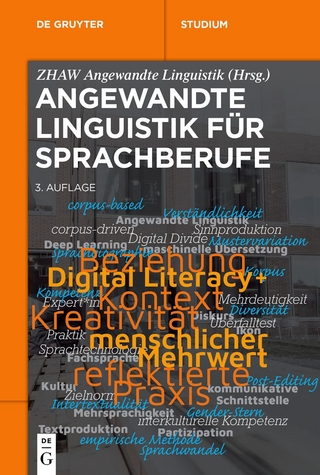
User’s Manual for the Quick Interactive Language Screener™ (QUILS™)
Brookes Publishing Co (Verlag)
978-1-68125-227-8 (ISBN)
- Titel z.Zt. nicht lieferbar
- Versandkostenfrei innerhalb Deutschlands
- Auch auf Rechnung
- Verfügbarkeit in der Filiale vor Ort prüfen
- Artikel merken
Early identification is the first step to helping young children with language delays improve their skills—proficiencies that are so important to later reading success. But how do you find the children who might need help? It's simple with the Quick Interactive Language Screener™ (QUILS™), a fun and fast web-based screening tool that helps you evaluate whether children are making language progress appropriate for their age group. Measuring both the what and the how of language learning, QUILS looks at three areas critical to language development and later academic success: vocabulary, syntax, and process.
The QUILS User's Manual includes all the information you need to conduct the QUILS screener effectively in early childhood settings with children ages 3 through 5 years. You’ll get:
a helpful introduction to QUILS, including why and how it was developed and what it measures
in-depth exploration of the three areas screened with QUILS
a comprehensive walk-through of the QUILS website
step-by-step guide to conducting the screening, including tips on ensuring children's eligibility, setting up a Student Record, and working with children effectively during the screening process
detailed guidelines on scoring, reporting, and follow-up
five case studies that illuminate QUILS in practice
a summary of the research and evidence base for QUILS
With this clear and concise manual, you’ll have the background and guidance you need to use QUILS successfully in your early childhood program—and identify children with potential language delays as early as possible.
About the Authors
About the Contributors
Preface
For the Reader: Essential Elements to Understanding the QUILS
Acknowledgments
Section I: AN INTRODUCTION TO THE QUILS™
Chapter 1 What Is the QUILS
Why the QUILS Was Developed
Who the QUILS Is For
What the QUILS Measures
Vocabulary and Syntax
Product and Process
Language Comprehension
Structure of the QUILS
Vocabulary Area
Syntax Area
Process Area
QUILS Components
Software
User's Manual
Language Questionnaire
English–Spanish Bilingual Version of the QUILS
Chapter 2 Why the QUILS Is Needed
Current Needs for Language Screening
Shortcomings of Other Language Assessments
What the QUILS Offers
Chapter 3 How the QUILS Was Developed
Item Development
First Item Tryout
Second Item Tryout
Creation of the Final Version of the QUILS
Section II: ADMINISTRATION OF THE QUILS
Chapter 4 The QUILS Areas, Types, and Items
Vocabulary Area
Nouns
Verbs
Prepositions
Conjunctions
Syntax Area
Wh-Questions
Past Tense
Prepositional Phrases
Embedded Clauses
Process Area
Verb Learning
Converting Active to Passive
Noun Learning
Adjective Learning
Chapter 5 The QUILS Web Site
Access
Log In
Username and Password Management
Welcome to the QUILS!
End User License Agreement (EULA)
Access to the QUILS
Navigation Bars
Home
About
Students
Adding a Student Record
Viewing a Student Record
Screenings
Reports
Export Raw Data
Editing a Student Record
Start Screening
Reports
Student Reports
Parent Report
Group Reports
Sharing Reports
Resources
Help
Account
Technical Requirements for Using QUILS
Recommended Hardware/Software
Computer Settings
Website Security and Information About Your Data
QUILS Data
Chapter 6 Conducting the Screening
Preparing to Use the QUILS
Ensuring Children's Eligibility
Allowing Time for Screening
Checking Students' Familiarity with Touchscreens
Preparing the Screening Environment
Setting Up a Student Record
Conducting a Screening
Observing the Student Doing the Practice Items
Giving the Screeners
Interacting with Children during Screening without Influencing Their Responses
Additional Recommendations for Working with Children in This Age Group
Testing Across Multiple Sessions
Chapter 7 Scoring, Reporting, and Follow-Up
Scores
Area and Overall Raw Scores
Standard Scores
Percentile Ranks
Standardization Sample
Cut Scores
Reports
Individual Student Reports
Parent Report
Group Reports
Follow-Up
Referral for Further Assessment
Rescreening
Enriching Children's Language Environments
Children with Vocabulary and Syntax Weaknesses
Chapter 8 The QUILS In Practice: Interpreting Results Through Five Case Examples
Case 1: Screening Indicates Typical Development
Case 2: Screening Reveals a Mixed Profile
Case 3: Screening Indicates Atypical Development
Case 4: Screening Indicates Atypical Development
Case 5: Screening Reveals Possible Language Delay
Section III: EVIDENCE BASE FOR THE QUILS
Chapter 9 Details on the Research Behind the QUILS
Normative Sample
Inclusion Criteria
Sample Composition
Developing the Items on the QUILS
Field Testing
Recruitment Process and Preparation of Sites?
First Item Tryout
Second Item Tryout
Validity
Construct Validity
Convergent Validity
Reliability
Test–Retest Reliability
Interrater Reliability
Scores
Generation of Standard Scores
Generation of Percentile Ranks
Determination of Cut Scores
Rasch Analyses
Evaluation and Reduction of Screener Bias
Future Directions
References
Index
| Erscheinungsdatum | 18.02.2018 |
|---|---|
| Verlagsort | Baltimore |
| Sprache | englisch |
| Maße | 216 x 279 mm |
| Themenwelt | Geisteswissenschaften ► Sprach- / Literaturwissenschaft ► Sprachwissenschaft |
| Medizin / Pharmazie ► Gesundheitsfachberufe ► Logopädie | |
| Sozialwissenschaften ► Pädagogik ► Schulpädagogik / Grundschule | |
| ISBN-10 | 1-68125-227-9 / 1681252279 |
| ISBN-13 | 978-1-68125-227-8 / 9781681252278 |
| Zustand | Neuware |
| Haben Sie eine Frage zum Produkt? |
aus dem Bereich


